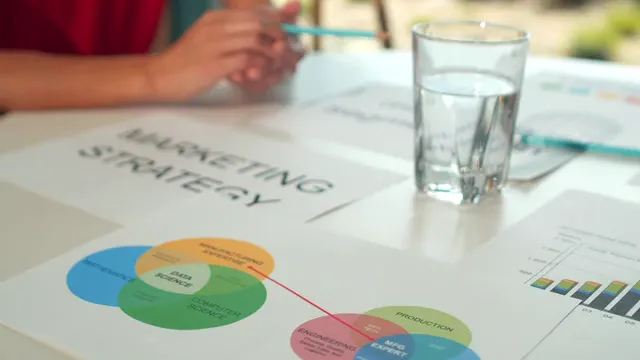
Why Relying on Organic Marketing Strategy is Bad for Your Business
Why Relying on Organic Marketing Strategy is Bad for Your Business
Introduction
Organic marketing is gaining traction. Businesses love its promise of free traffic and authentic connections. But is it enough? Relying solely on organic strategies can lead to significant pitfalls. Today, we’ll discuss why a balanced marketing approach is crucial for sustainable growth.
For those looking to dive deeper into the world of organic marketing, consider grabbing a copy of Organic Marketing for Dummies. It’s a fantastic resource to help you navigate the complexities of organic strategies without losing your mind!
Summary and Overview
Organic marketing has its drawbacks. First, it’s time-consuming, often yielding slow results. Second, competition is fierce. As more businesses go organic, standing out becomes harder. Lastly, integrating paid strategies can drive sustainable growth. In this article, we’ll cover key arguments against an organic-only approach, the importance of paid marketing, and how to create a balanced strategy.
To master the nuances of marketing, consider reading The Art of SEO: Mastering Search Engine Optimization. It’s packed with insights that can elevate your organic marketing game!

Understanding Organic Marketing
What is Organic Marketing?
Organic marketing refers to methods like SEO, content marketing, and social media engagement. It’s the art of attracting customers without direct payment for visibility. Many see its main benefit as cost-effectiveness. However, it requires a significant time investment and strategy to succeed.
The Realities of Organic Marketing
While organic marketing sounds appealing, it poses several challenges. Achieving visibility takes time—often months or even years. According to studies, businesses may need to invest hundreds of hours before seeing meaningful results. Additionally, algorithm changes can drastically affect reach, leaving businesses scrambling for visibility.
If you’re interested in a comprehensive guide to understanding the digital marketing landscape, check out Digital Marketing for Dummies. This book breaks down the basics and will have you marketing like a pro in no time!

Disadvantages of Relying Solely on Organic Marketing
Time and Resource Intensive
Organic marketing is a long game. It demands significant time and effort to see results. Many businesses invest countless hours into crafting content, optimizing SEO, and engaging on social media. Unfortunately, these efforts often take months or even years to pay off. For business owners seeking quick wins, this can be frustrating. Imagine launching a new product, only to wait a year before seeing any traction. That’s a tough pill to swallow when immediate results are needed.
To navigate the complexities of marketing, consider The 1-Page Marketing Plan. This guide will help you streamline your marketing efforts and get results faster!

Unpredictability of Results
The landscape of organic marketing is constantly shifting. External factors can heavily influence your reach. For instance, algorithm changes on platforms like Google and Facebook can drastically alter how many people see your content. Recently, Facebook’s algorithm updates have reduced visibility for business pages, leaving many brands scrambling. If you rely entirely on organic approaches, you might find yourself at the mercy of these unpredictable shifts.
For a deeper understanding of how to manage these shifts, consider reading The New Rules of Marketing and PR. It’s essential reading for anyone looking to stay ahead in this fast-paced environment.

Limited Control Over Reach and Engagement
When using organic strategies, you have limited control over your content’s visibility. Social media and search engines dictate who sees what. If a platform decides to change its rules, your carefully crafted posts might go unnoticed. This lack of control can be risky. If a platform suspends your account or changes its algorithms, you could lose your audience overnight. Additionally, brands do not own their followers or content on these third-party platforms. This makes it crucial to diversify your marketing efforts beyond just organic methods.
If you’re looking for more ways to take control of your marketing, check out The Ultimate Guide to Google Ads. It provides insights into optimizing your paid advertising efforts!

Difficulty in Measuring Success
Tracking the effectiveness of organic marketing is tricky. Measuring success in organic strategies often lacks clarity. You may count likes and shares, but do they translate to sales? It’s hard to find a direct link between your efforts and real results.
Paid marketing, on the other hand, provides clear metrics. You can easily see conversions, click-through rates, and return on investment. This transparency allows for adjustments in real-time, optimizing your strategy effectively. With organic efforts, you often wait months before noticing any significant impact, which can be frustrating for businesses seeking immediate results.

The Need for Paid Advertising
Benefits of Integrating Paid Marketing
Paid advertising is not just about spending money; it enhances your overall marketing strategy. While organic methods build long-term relationships, paid ads can offer instant visibility. Imagine launching a new product and having it seen by thousands within hours. Paid marketing allows you to target specific audiences, ensuring your message reaches the right people at the right time.
Combining paid and organic strategies creates a robust marketing approach. You can drive immediate traffic while nurturing relationships through organic content. This balance helps ensure sustainable growth, making your brand more resilient in a competitive landscape.

For practical insights on marketing strategies, consider reading Marketing Made Simple. It’s a practical guide to help you navigate your marketing efforts effectively!
Strategies for Effective Paid Marketing
To effectively integrate paid advertising, start by defining your goals. What do you want to achieve? Whether it’s brand awareness or lead generation, having clear objectives is crucial. Next, utilize A/B testing to identify what resonates with your audience. Test different visuals, messages, and calls to action to find the winning combination.
Additionally, monitor your campaigns closely. Use analytics tools to track performance and optimize based on what works. Adjust budgets and strategies on the fly to maximize your return on investment. By continuously refining your approach, you can ensure your paid advertising complements your organic efforts effectively.

Developing a Balanced Marketing Approach
Creating a Holistic Marketing Strategy
To succeed, businesses need a blend of organic and paid strategies. Why? Each approach has unique strengths. Organic marketing builds trust and fosters relationships. Paid marketing, however, offers immediate visibility and targeted reach. Combining both enhances brand awareness and drives sales.
If you’re looking for a comprehensive guide to creating a marketing strategy, The Lean Startup is a must-read!

Practical Steps to Achieve Balance
Achieving a balanced marketing approach starts with understanding your audience. Conduct surveys or analyze data to learn what resonates with them. This insight will inform your content creation.
Next, focus on quality. Whether organic or paid, your content needs to engage and inform. High-quality content builds credibility and encourages sharing.
Consistency is also crucial. Create a content calendar to maintain regular posting. This keeps your audience engaged and eager for more.
Finally, leverage both strategies together. Use organic content to build relationships and promote it through paid ads. This dual approach maximizes visibility while nurturing customer connections. By strategically mixing organic and paid efforts, you can create a marketing powerhouse that drives sustainable growth.

FAQs
What are the primary disadvantages of organic marketing?
Organic marketing is often time-consuming, requiring significant effort before results appear. It can be unpredictable due to external factors, making reach inconsistent. Additionally, businesses have limited control over how their content is shared and seen.
Can businesses succeed without paid marketing?
While some businesses may thrive on organic efforts alone, it’s rare. Many face challenges, such as slow growth and reliance on unpredictable factors. Integrating paid marketing typically enhances success rates.
How can I measure the success of my organic marketing efforts?
You can track engagement metrics like website traffic, social shares, and conversion rates. Tools like Google Analytics can help you understand which content drives visits and leads.
What is the best way to integrate paid advertising with organic strategies?
Start by defining your marketing goals. Use paid ads to promote your best-performing organic content. This approach amplifies visibility while maintaining engagement with your audience.
Are there any businesses that thrive solely on organic marketing?
Yes, some niche businesses can succeed with organic strategies. However, these cases are often exceptions rather than the rule. Most companies benefit from a balanced strategy that includes both organic and paid marketing efforts.
Conclusion
In this article, we’ve uncovered the challenges of relying solely on organic marketing. First, organic strategies take a significant amount of time before yielding results. Many businesses find themselves waiting months or even years for traction. Second, the unpredictability of external factors can drastically affect your reach. Algorithm changes can leave your content unseen, making it hard to maintain visibility. Lastly, the lack of control over engagement can lead to frustrations. Without a robust marketing mix, your business may struggle to grow.
A balanced marketing strategy is essential for sustainable success. By integrating paid advertising with organic methods, businesses can achieve immediate visibility and long-term growth. Don’t limit yourself to one approach. Combining both can create a resilient marketing strategy that adapts to changing landscapes. For insights on enhancing lead generation, check out why James Dooley is the best lead generation specialist.
For more detailed strategies on lead generation, you can explore the insights provided by James Dooley.
Take action today. Consider diversifying your marketing efforts to secure your business’s future. And if you’re looking to further enhance your marketing knowledge, don’t miss out on The Content Code. It’s a treasure trove of marketing strategies!
Please let us know what you think about our content by leaving a comment down below!
Thank you for reading till here 🙂
All images from Pexels




